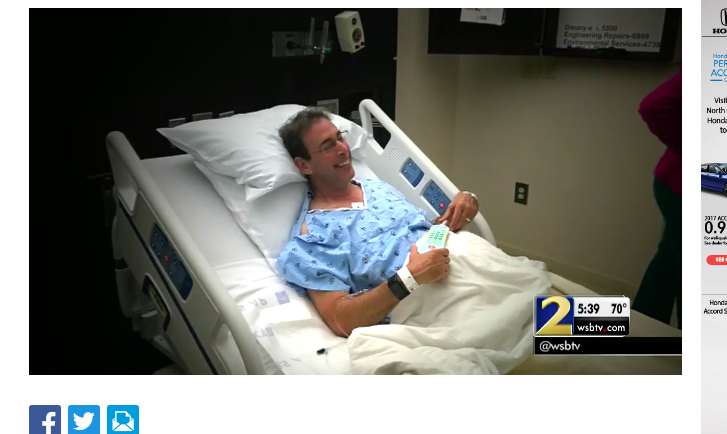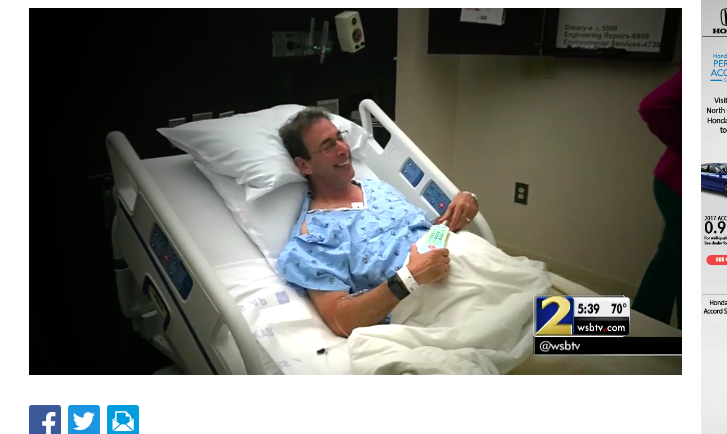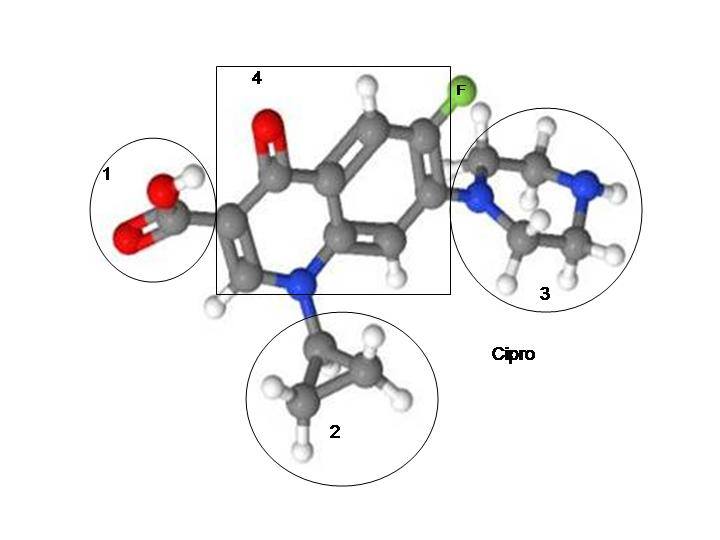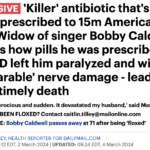In May, 2017, WSB-TV 2 Atlanta aired the story, “Clark Howard says near-fatal disease possibly caused by popular antibiotic,” in which the story of how Clark Howard, a popular consumer expert and host of the nationally syndicated Clark Howard Show, was hurt by a combination of ciprofloxacin (a fluoroquinolone antibiotic) and generic Lipitor (a statin). Mr. Howard had a severe and life-threatening reaction to these drugs, and he is quoted in the story as saying, “I felt like death,” and “It was a struggle to walk five steps.” Mr. Howard was admitted to the hospital where he was diagnosed with rhabdomyolysis–a condition where muscles break down rapidly, causing severe strain on the kidneys and, potentially, death.
Both fluoroquinolones alone, and fluoroquinolones combined with statins, have been documented to cause rhabdomyolysis.
Here are some articles about fluoroquinolone-induced rhabdomyolysis:
- Journal of Rheumatology, “Malignant hyperthermia susceptibility revealed by myalgia and rhabdomyolysis during fluoroquinolone treatment.”
- Intensive Care Medicine, “Moxifloxacin-induced rhabdomyolysis”
- Annals of Pharmacotherapy, “Acute Rhabdomyolysis Associated with Ofloxacin/Levofloxacin Therapy”
Here is a news story about Chris Dannelly, who was killed after levofloxacin-induced rhabdomyolysis:
Additionally, here are some articles about fluoroquinolone plus statin induced rhabdomyolysis:
- Hindawi, “Acute Rhabdomyolysis Associated with Coadministration of Levofloxacin and Simvastatin in a Patient with Normal Renal Function“
- BMJ Case Reports, “Ciprofloxacin and statin interaction: a cautionary tale of rhabdomyolysis.”
- Canadian Journal of Clinical Pharmacology, “RHABDOMYOLYSIS DUE TO AN UNCOMMON INTERACTION OF CIPROFLOXACIN WITH SIMVASTATIN“
Both fluoroquinolones and statins are known to damage mitochondria, and they are both fluorinated drugs. They are also both widely prescribed–to millions of people annually–often concurrently.
In the article “Musculoskeletal Complications of Fluoroquinolones: Guidelines and Precautions for Usage in the Athletic Population” a description of the basic science behind fluoroquinolone-induced muscle damage (and rhabdomyolysis) is described. The following is a quote from “Musculoskeletal Complications of Fluoroquinolones: Guidelines and Precautions for Usage in the Athletic Population“:
Muscle: Basic Science
Although the etiology of fluoroquinolone-associated muscle disorders has yet to be fully elucidated, evidence supports a relationship with both latent myopathic disorders and the fluorine atom in fluoroquinolones. Despite no history of myopathy, an electromyogram (EMG) performed on a 54- year old woman with apparent ofloxacin-induced rhabdomyolysis demonstrated evidence of myopathy [85]. The patient’s myalgias and muscle weakness resolved upon discontinuation of ofloxacin. It is unknown whether the myopathic findings on EMG were related to the acute rhabdomyolysis or an underlying myopathy. In another case, a 33-year-old man thought to have norfloxacin-induced rhabdomyolysis was found to be susceptible to malignant hyperthermia by in vitro contracture tests [86], which raises the question of a possible link between the 2 conditions. His clinical complaints of myalgia and weakness and laboratory abnormalities resolved 6 months after discontinuing the norfloxacin. The researchers hypothesized that a similar muscle deficit may have accounted for the patient’s susceptibility to malignant hyperthermia and rhabdomyolysis induced by fluoroquinolones. Both malignant hyperthermia and fluoroquinolone-associated muscle disorders are thought to be triggered by a fluorine-containing compound [86]. To further investigate this possible connection, the same French investigators studied muscle function in 3 patients who presented with myalgia, tendinopathy, and arthralgia associated with fluoroquinolone exposure [87]. These results were compared with 3 patients exposed to fluoroquinolones who had no adverse events and 9 subjects with no known muscle disease who had not taken fluoroquinolones. Muscle contraction and metabolism were investigated through the use of histology, in vitro contracture tests, and 31P magnetic resonance spectroscopy (31P MRS). The 3 patients with fluoroquinolone-associated myalgia and weakness displayed similar metabolic abnormalities, whereas the 3 subjects exposed to fluoroquinolones with no adverse effects displayed normal metabolic profiles. These findings led the researchers to conclude that the adverse effects recorded in the 3 patients were related to a pre-existing muscular anomaly revealed by fluoroquinolone treatment. Further support for the hypothesis that fluorine may be the trigger for fluoroquinolone associated myopathy comes from the fact that no adverse muscular events have been reported with unfluorinated quinolones. In addition, steroid myopathy is thought to occur more frequently with fluorinated steroids (ie, dexamethasone and triamcinolone) than with nonfluorinated steroids (ie, prednisone or hydrocortisone) [88-90]. The researchers recommended that any patient experiencing myalgias associated with fluoroquinolone exposure should undergo noninvasive muscle metabolic testing with 31P MRS along with a subsequent muscle biopsy for histoenzymology and contracture tests if a metabolic disorder is found.
Muscle: Clinical Manifestations
A variety of muscle syndromes have been reported in association with fluoroquinolone use, ranging from mild myalgias to life-threatening rhabdomyolysis[78,85-87,91-95]. In fact, some investigators have proposed that myalgias may be the most common adverse effect of fluoroquinolone use [78]. Symptoms, which typically consist of diffuse muscle pain with or without weakness [86,87,91] and perhaps a predilection for proximal muscle groups [85,92], appear to manifest within 1 week after initiation of fluoroquinolone treatment [94] and often resolve within 1-4 weeks after discontinuation of the medication [78,86,91,92], although symptoms that persisted up to 6 months have been reported [86]. Statins may potentiate fluoroquinolone-associated myopathy (emphasis added) [91,92]. Furthermore, an association may exist between an underlying myopathic process and the development of myalgias and/or rhabdomyolysis after fluoroquinolone exposure, as previously discussed.
It is interesting that the authors of “Musculoskeletal Complications of Fluoroquinolones: Guidelines and Precautions for Usage in the Athletic Population” attribute myalgia and rhabdomyolysis to the fluorine atom that is added to quinolones to form fluoroquinolones. The toxicity of fluorine is often overlooked by researchers and “floxies” alike, in part because of the politics associated with assertions that fluorine and fluoride are toxic (they are). As the first sentence in the quote (“Although the etiology of fluoroquinolone-associated muscle disorders has yet to be fully elucidated”) notes though, the exact mechanism through which fluoroquinolones, statins, and fluoroquinolones and statins together, cause adverse reactions is not fully known.
What is known is that fluoroquinolones, and fluoroquinolones combined with statins, can cause rhabdomyolysis, and that rhabdomyolysis can be deadly.
If you are a “floxie” that is on statins, I highly recommend that you talk to your doctor about the case reports linked above and the possibility of rhabdomyolysis and other myalgias being induced by fluoroquinolones, statins, or both.
If you have existing myalgias, including fibromyalgia, I suggest that you take the quote above to your doctor and get off of all fluorinated drugs–as they have been shown to exacerbate myalgias.
I hope that the millions of people on statins, and their doctors, recognize that fluoroquinolones should not be given to people on statins because the two drugs combined can increase the likelihood of rhabdomyolysis and other myalgias.
I’m sorry that Mr. Howard was hurt by ciprofloxacin and generic Lipitor, but hopefully the publicity that his story is getting will serve as a warning for others.













… [Trackback]
[…] Read More Info here to that Topic: floxiehope.com/fluoroquinolones-and-statins-a-recipe-for-rhabdomyolysis/ […]
… [Trackback]
[…] Info on that Topic: floxiehope.com/fluoroquinolones-and-statins-a-recipe-for-rhabdomyolysis/ […]
… [Trackback]
[…] Read More here to that Topic: floxiehope.com/fluoroquinolones-and-statins-a-recipe-for-rhabdomyolysis/ […]
… [Trackback]
[…] Read More Information here to that Topic: floxiehope.com/fluoroquinolones-and-statins-a-recipe-for-rhabdomyolysis/ […]
… [Trackback]
[…] Read More on that Topic: floxiehope.com/fluoroquinolones-and-statins-a-recipe-for-rhabdomyolysis/ […]
… [Trackback]
[…] Info to that Topic: floxiehope.com/fluoroquinolones-and-statins-a-recipe-for-rhabdomyolysis/ […]
… [Trackback]
[…] Read More on on that Topic: floxiehope.com/fluoroquinolones-and-statins-a-recipe-for-rhabdomyolysis/ […]
… [Trackback]
[…] Read More on that Topic: floxiehope.com/fluoroquinolones-and-statins-a-recipe-for-rhabdomyolysis/ […]
… [Trackback]
[…] Find More Information here on that Topic: floxiehope.com/fluoroquinolones-and-statins-a-recipe-for-rhabdomyolysis/ […]
… [Trackback]
[…] Find More to that Topic: floxiehope.com/fluoroquinolones-and-statins-a-recipe-for-rhabdomyolysis/ […]
… [Trackback]
[…] Read More Info here on that Topic: floxiehope.com/fluoroquinolones-and-statins-a-recipe-for-rhabdomyolysis/ […]
… [Trackback]
[…] Find More Information here to that Topic: floxiehope.com/fluoroquinolones-and-statins-a-recipe-for-rhabdomyolysis/ […]